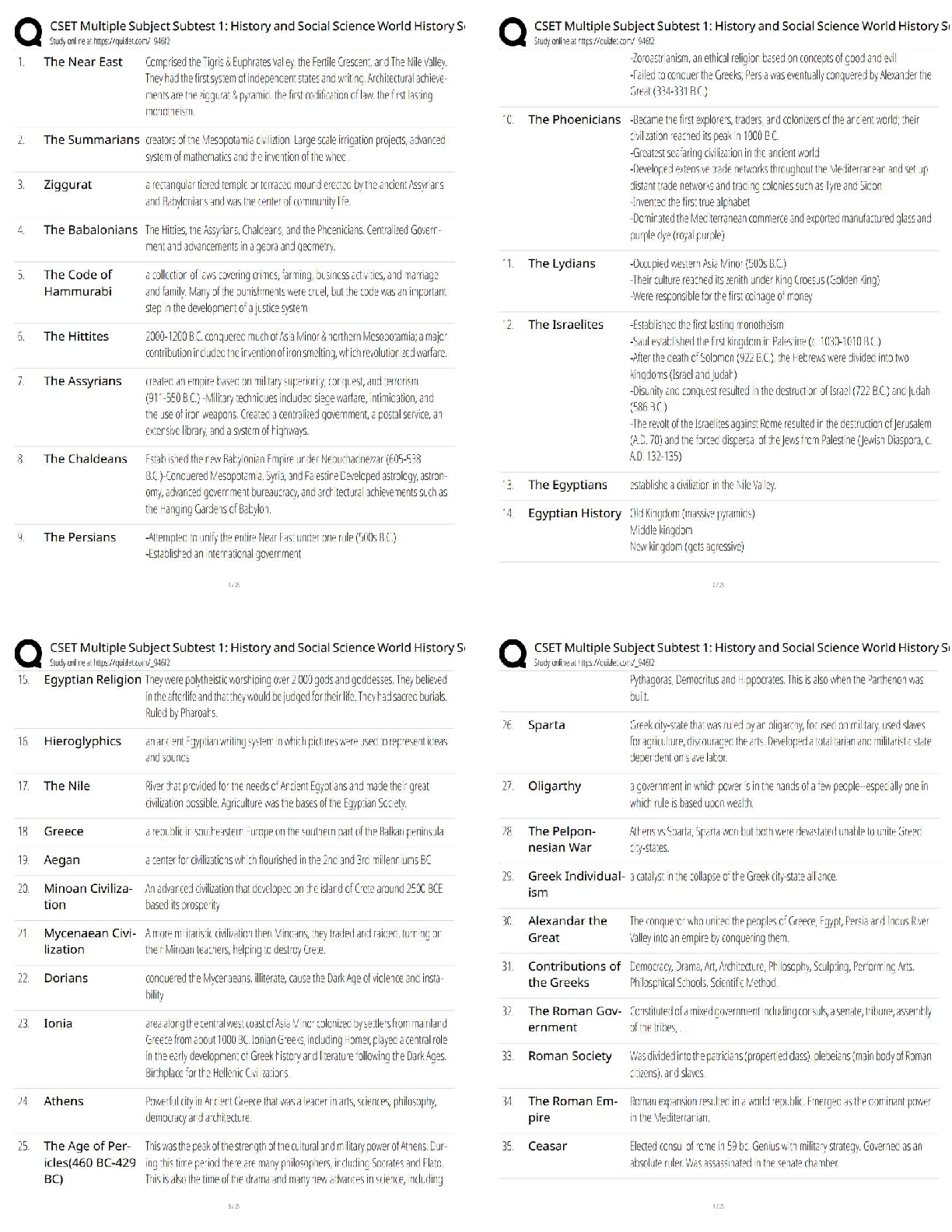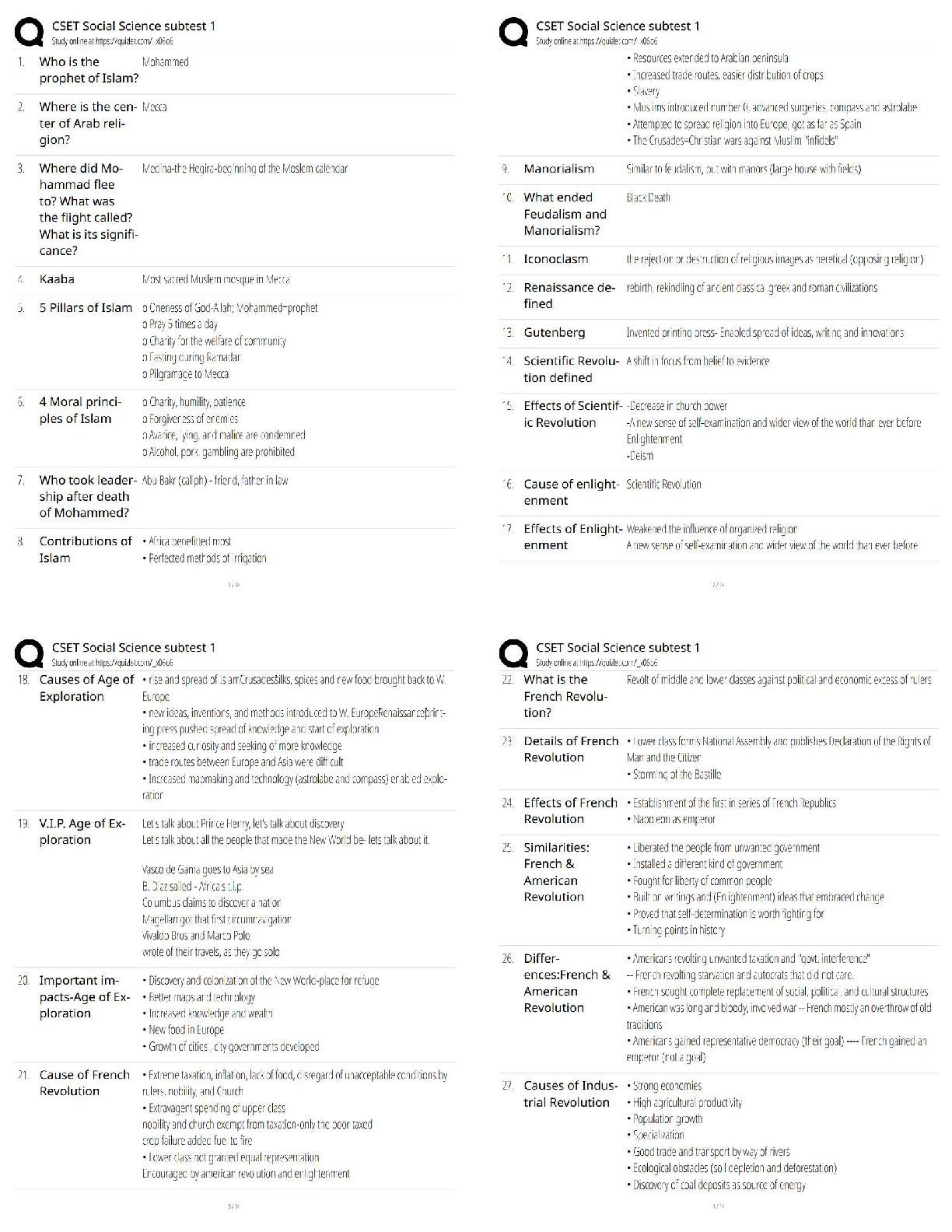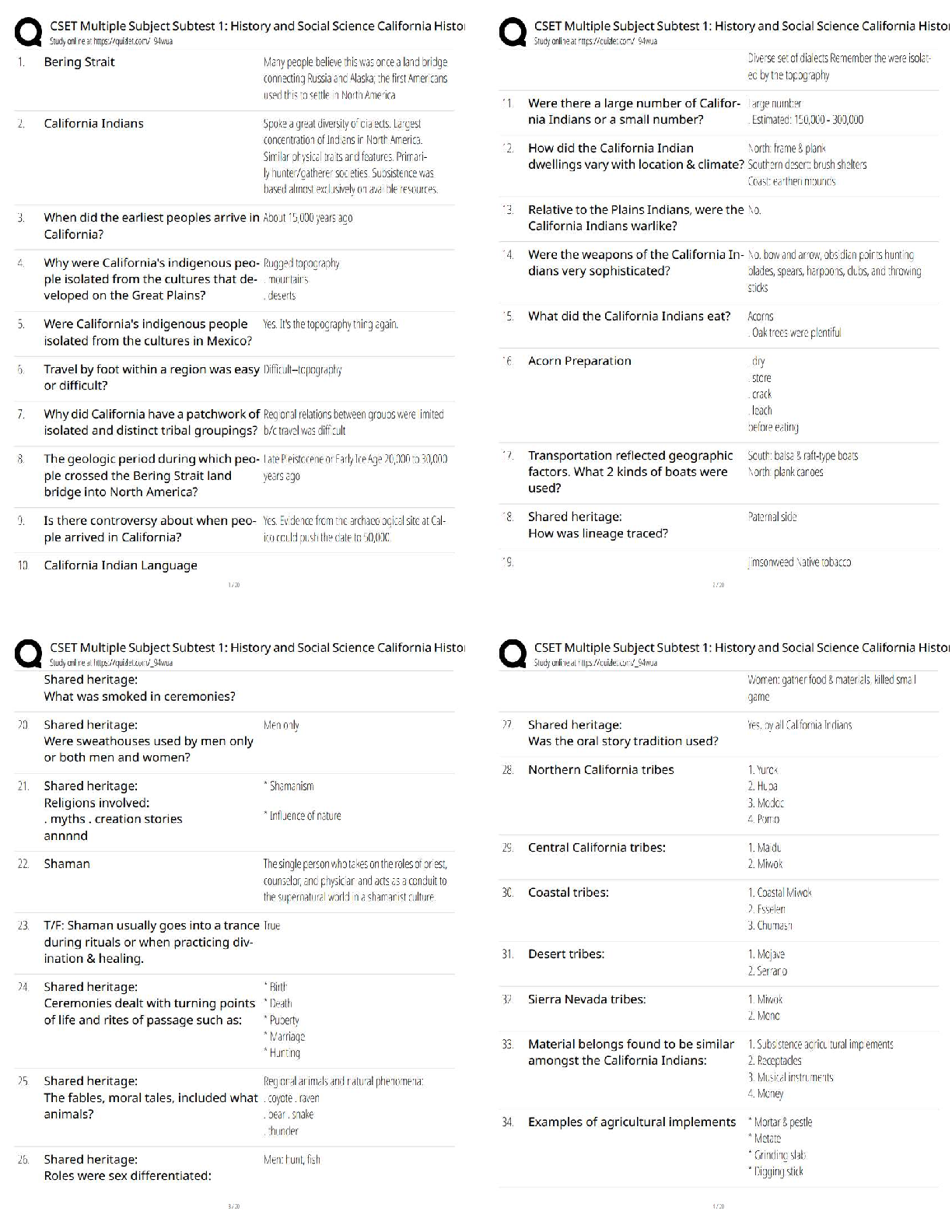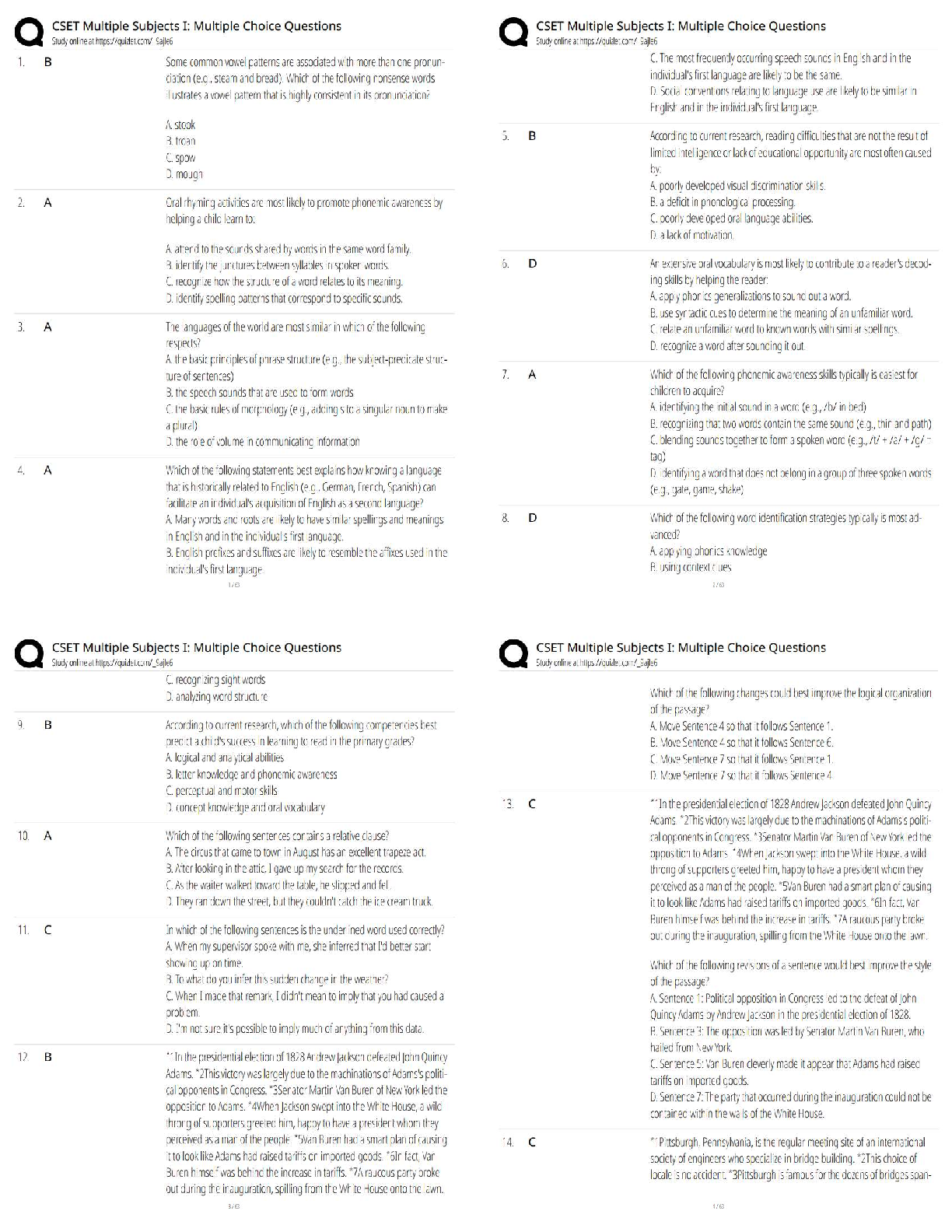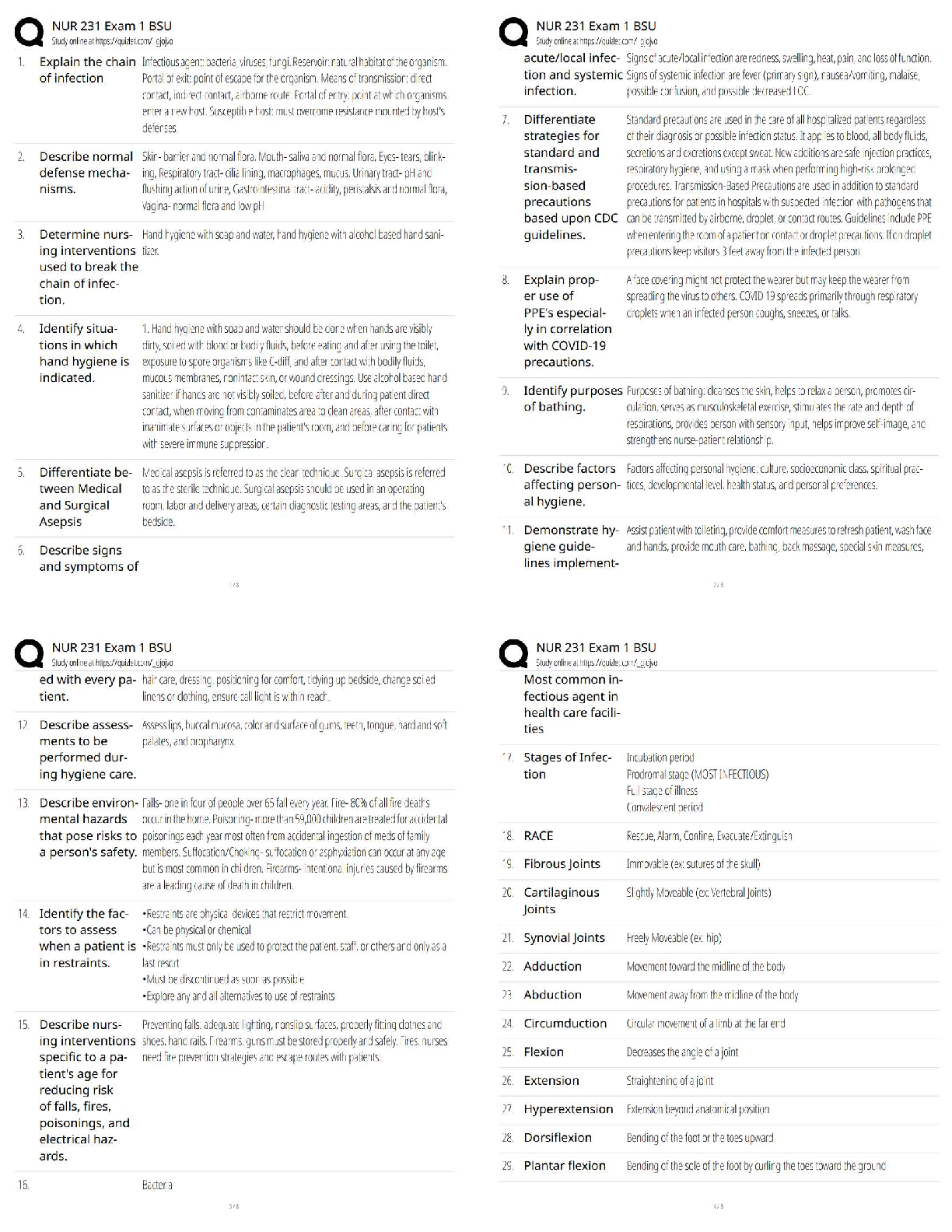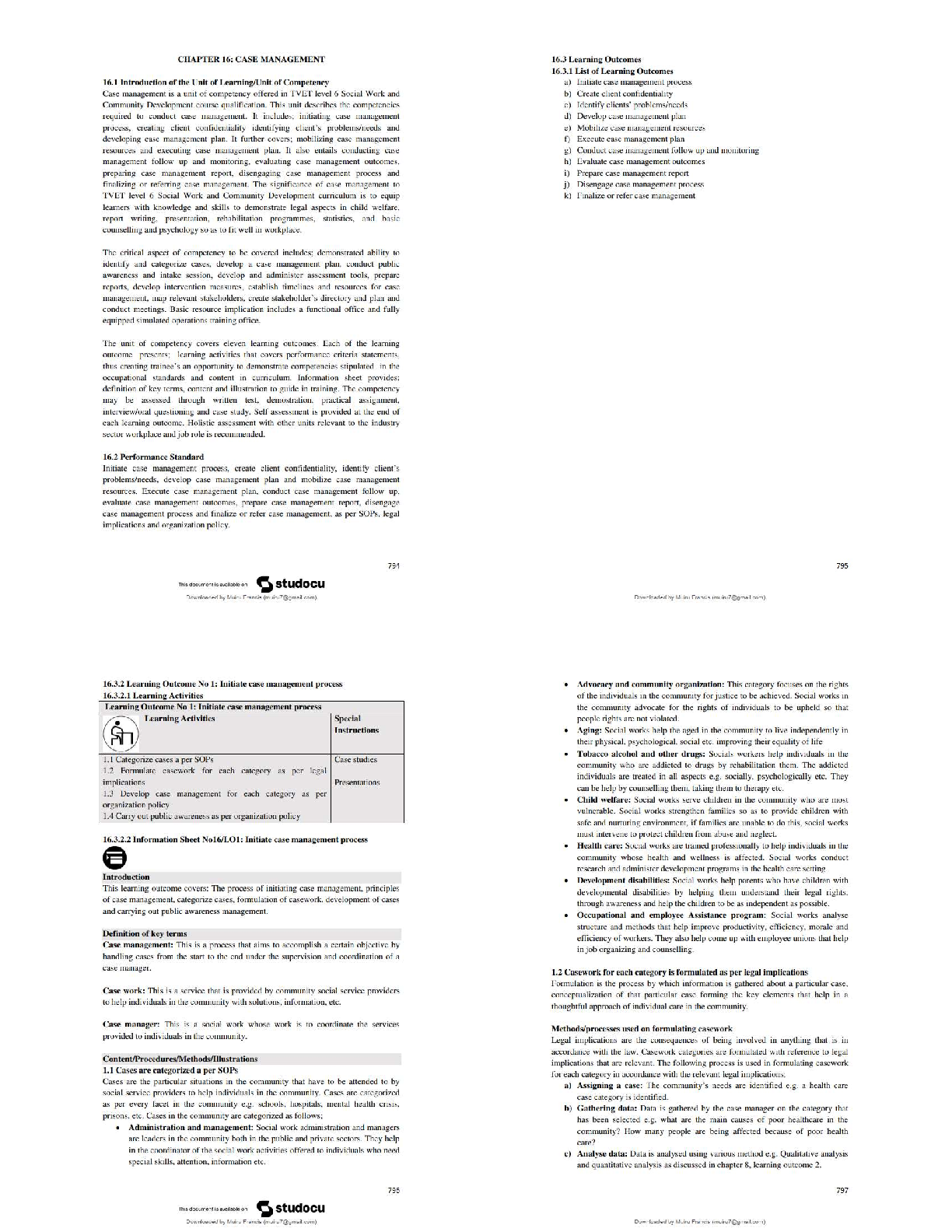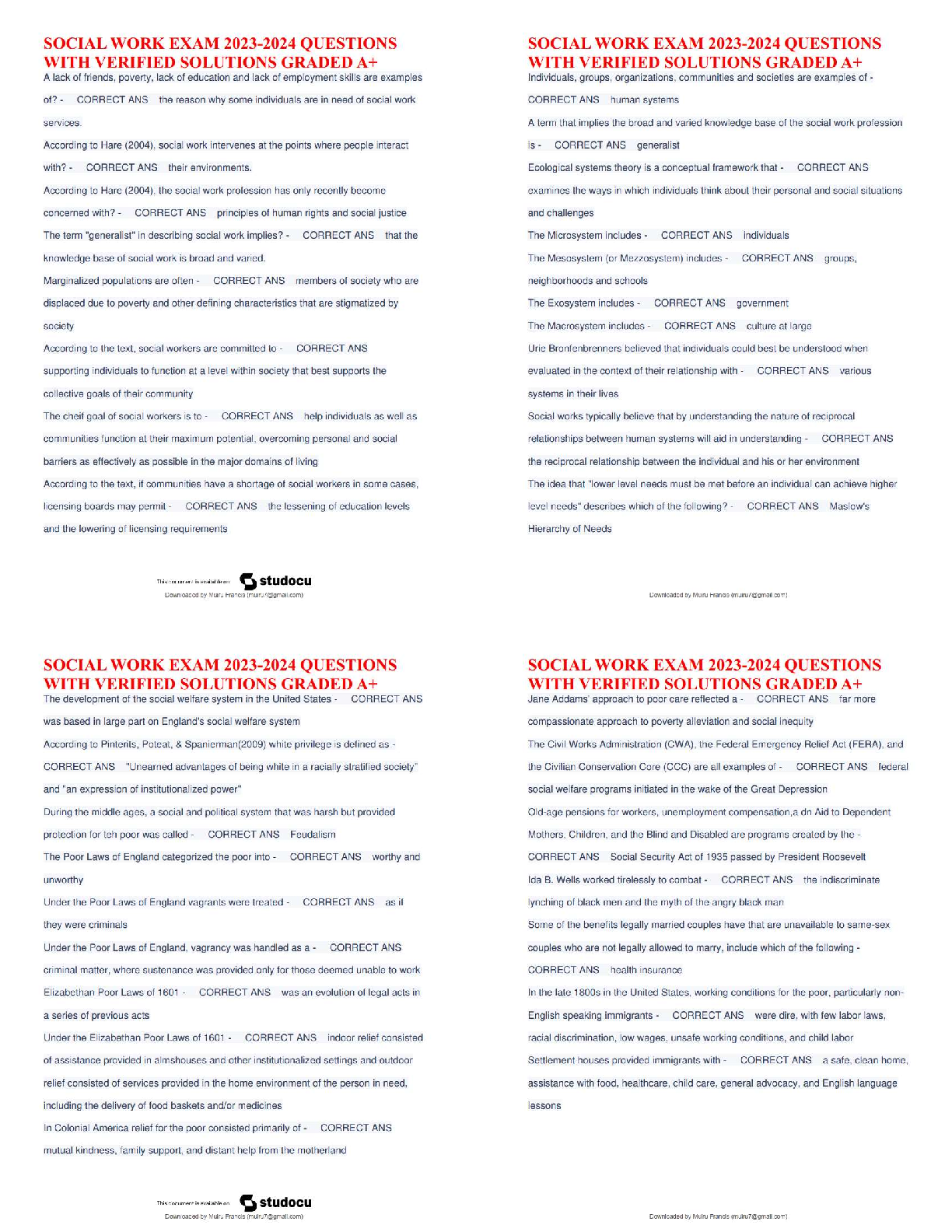Linguistics > QUESTIONS & ANSWERS > LETRS Unit 7 Questions and Answers 100% Pass (All)
LETRS Unit 7 Questions and Answers 100% Pass
Document Content and Description Below
LETRS Unit 7 Questions and Answers 100% Pass With first-grade students, how much instructional time should be spent on English language arts? ✔✔2 hours or more Teachers should depend heavily o ... n the results of screeners such as Acadience Reading K-6 Next to determine what skills should be taught to students. ✔✔false By second grade, the most effective approach to teaching reading comprehension emphasizes: ✔✔all of the above in roughly equal proportion Which of the following is not a criterion for high-quality text? ✔✔relevant to what's going on that day One tet of a robust curriculum in grades K-3 is whether, upon walking into a classroom, an observer can tell what students are learning about. ✔✔true Students are more likely to understand a text when teachers incorporate strategies into their lessons. ✔✔true Students using comprehension strategies in small groups is an example of which strategy? ✔✔cooperative learning Which of the following are techniques for summarization? Select all that apply. ✔✔a. finding the main idea of a text b. reducing the number of words in a passage c. paraphrasing d. identifying redundancies in a text Good readers already tend to automatically use comprehension strategies. ✔✔true Comprehension strategies are effective because they (select all that apply): ✔✔a. enable the reader to "converse" with the author. b. support mental processes the reader needs to comprehend the text. Failure to comprehend a text can happen at what stage? Select all that apply. ✔✔a. when trying to understand individual words b. when trying to understand sentences c. when trying to understand a series of sentences d. when trying to understand the logical flow and meaning of the whole passage Aside from making students aware of what they're thinking, what are other benefits of comprehension monitoring? Select all that apply. ✔✔a. It helps students be more persistent with a text. c. It gives students more time to process a text. d. It lets students know they can do something to address their struggles with comprehension. After asking students what's confusing about a passage, the teacher should then ✔✔ask a question that might be answered from the text The teacher asks a student to explain why someone would sneeze. After the student tries to explain his thinking, the teacher supports his ideas by ✔✔thinking aloud and demonstrating a key point. The teacher read a section about lungs. Anticipating that students will be confused, what does she do to support comprehension? ✔✔She asks students to point to their brain and lungs. Visualizations can include (select all that apply) ✔✔a. students sharing their images with peers. b. teachers describing what they see with the rest of the class. d. students creating drawings of what they imagine. Since visualizing is based on personal interpretation, it's not necessary for students' visualizations to have a clear connection to the text. ✔✔false Why does the teacher ask students to sneeze? ✔✔She wanted to double-check to be sure they knew what a sneeze is. What types of support best help students with retelling a story? Select all that apply. ✔✔b. asking students to complete the Story Framework graphic organizer c. referring to visuals as the class creates a retell d. organizing partners to talk about, then write about, a retell Basic story elements include the questions (select all that apply): ✔✔a. Who are the characters? b. When, where? c. What happened first, next, last? The students most likely to benefit from strategy instruction are those who (select all that apply): ✔✔b. are in grades four and above. d. have acquired good decoding skills but aren't familiar with a particular strategy. The best time to employ strategy instruction is when: ✔✔c. students are ready for it, in the context of lessons with a larger purpose. Which of these steps in the "gradual release of responsibility" of strategy instruction is out of sequence? ✔✔a. The teacher models the thinking process by thinking aloud. Good readers tend to read on, even when the passage is not making sense to them. ✔✔false "Imagine what would happen if the polar ice caps melted" is an example of what type of question? ✔✔creating Why does the teacher ask students whether Jack is happy? ✔✔to support their understanding of his reactions The teacher told students the definition of "jested" because: ✔✔it's a Tier 3 word, so she told them the meaning and moved on. The teacher asks what Jack and his friends are going to do at the big lot because: ✔✔she wants to help the students infer from the story what's happening. Well-designed questions (select all that apply): ✔✔are text-dependent. focus on the "why" and "how" of a topic. Which of the following is an example of elaborative questioning? ✔✔"Would you have reacted the same way the girl did?" "How do you know that she liked her new home?" is an example of: ✔✔implicit questioning. Teaching comprehension can be accomplished by testing students with multiple-choice questions after they've completed independent reading. ✔✔false After-reading activities should be the same for both narrative and expository texts. ✔✔false When creating after-reading activities, always include: ✔✔ideas that connect back to the purpose of reading the text. After-reading activities appropriate for narrative texts typically include which of the following? ✔✔a. completion of a story map b. a retell of the story c. compare/contrast of characters d. all of the above (correct) Graphic organizers most appropriate to use with informational texts include: ✔✔main idea/detail sorting charts. Completing Venn diagrams after reading an informational text help: ✔✔compare and contrast two main ideas. Assigning mini-research projects for an after-reading activity is best done: ✔✔while providing scaffolded supports for young readers. The teacher helps students identify the text's overarching main idea by asking the question: ✔✔"What was this book mostly about?" Why did the teacher ask students to organize themselves into small groups? ✔✔to help them identify main ideas and their supporting details What effective supports did the teacher provide when students were confused? ✔✔a. She directed them to talk with each other. b. She read their card with them to ensure they knew what it said. c. She asked specific questions about how their card related to others. d. all of the above (correct) [Show More]
Last updated: 2 years ago
Preview 1 out of 8 pages
.png)
Buy this document to get the full access instantly
Instant Download Access after purchase
Buy NowInstant download
We Accept:

Also available in bundle (1)
Click Below to Access Bundle(s)
.png)
LETRS UNITS 1-8 BUNDLED EXAMS QUESTIONS AND ANSWERS WITH VERIFIED SOLUTIONS
LETRS UNITS 1-8 BUNDLED EXAMS QUESTIONS AND ANSWERS WITH VERIFIED SOLUTIONS
By Nutmegs 2 years ago
$17
8
Reviews( 0 )
$10.00
Can't find what you want? Try our AI powered Search
Document information
Connected school, study & course
About the document
Uploaded On
Feb 06, 2023
Number of pages
8
Written in
All
Additional information
This document has been written for:
Uploaded
Feb 06, 2023
Downloads
0
Views
232


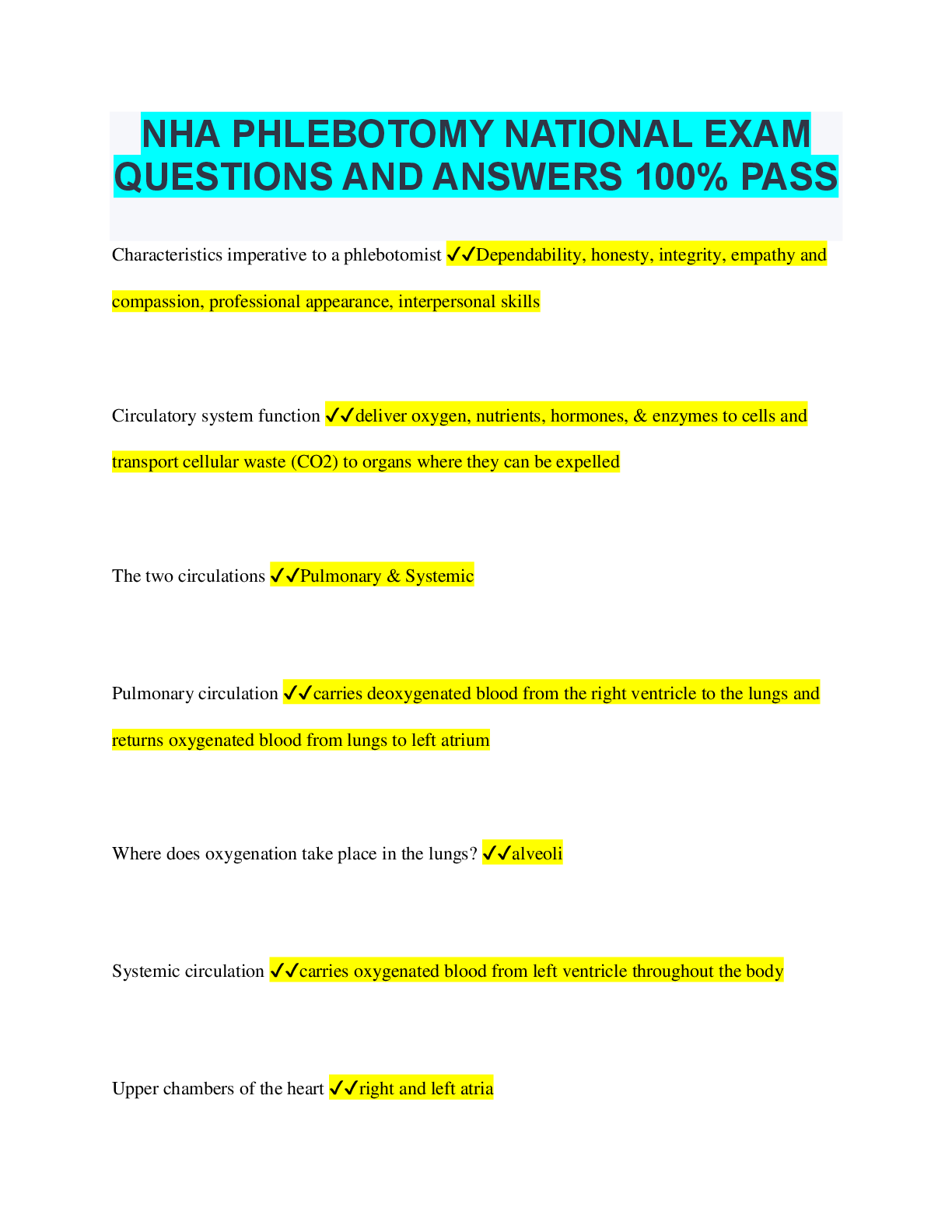




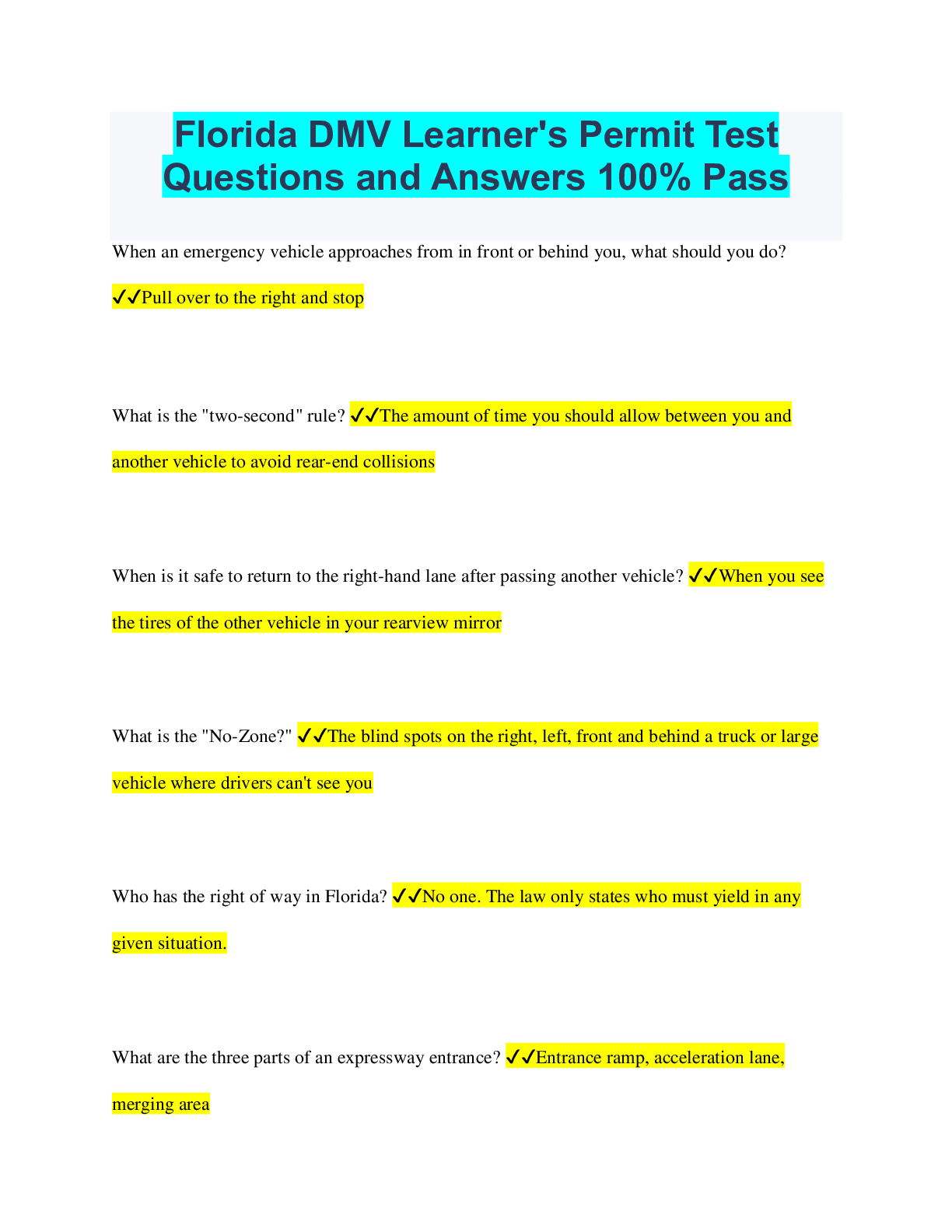
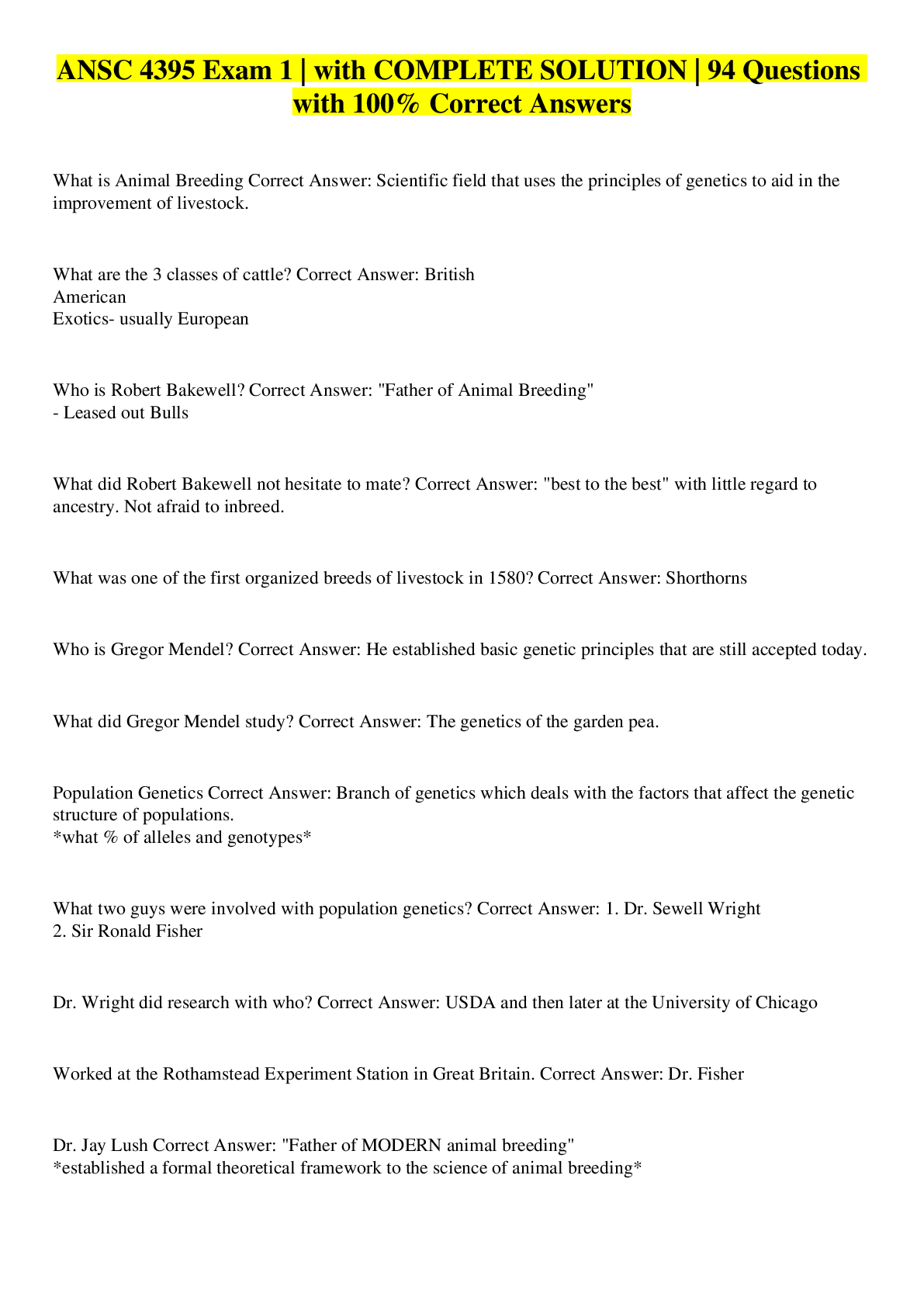

.png)


